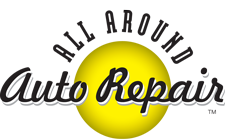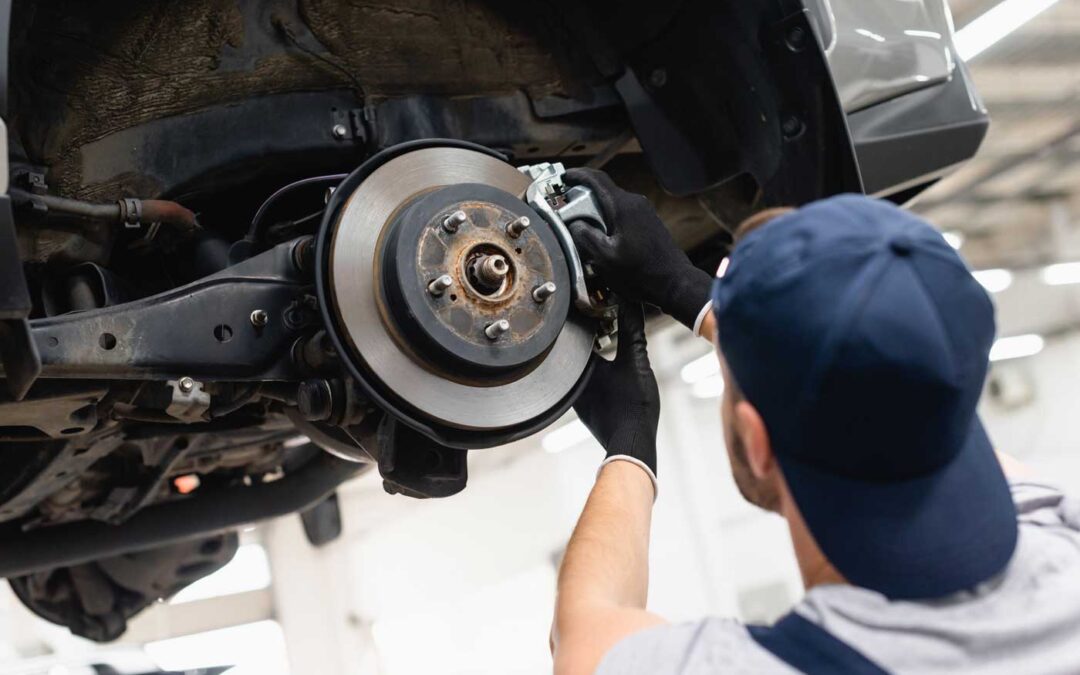A good practice to fall into is getting a brake inspection every six months. Ideally, you’d get your brakes inspected during a tire rotation, and you should get your brake fluid changed out about every year or two. What about more exigent situations, though?
The Importance of Regular Brake Inspection
Great question. Your brake indicator lighting up with your dashboard indicators would probably indicate that you’re overdue for an inspection to see what’s going on. Your brake indicator light coming on could actually indicate a mishap waiting to happen.
Here’s a for instance – If the brake light turns on anytime you go to apply the brake or if the brake light stays on, then there’s a good chance that your hydraulic pressure has been compromised on at least one side of your braking system. That’s, as they say, no bueno!
Your Braking System Has Many Moving Parts
Your vehicle’s brakes are critical for your own safety and the safety of everyone on the road. Because your brakes are comprised of a number of parts that need periodic inspection, replacement, and tuneups, you’ll want to make sure your brake inspection is done on schedule.
Fact is, though, most folks immediately (and narrowly) think about brake pads when it comes to brake inspections – some of the credit deservedly goes to the Chris Farley movie Tommy Boy for that one!
But your braking system is made up of more than brake pads since it includes rotors and calipers (each caliper gets two brake pads). Your braking system also likely has tubes and hoses that can come loose or disintegrate over time, let alone issues with the hydraulic fluid alluded to above.
For Starters, Three-point Brake Pedal Check 
The actual brake pedal is, of course, your main point of physical contact with your braking system. That’s why submitting your brake system to a three-point pedal check during your brake inspection is so critical.
What are these three points that you speak of? Well, at a brake inspection the brake height, brake’s free play, and brake’s reserve distance will all be checked to ensure that each is attuned to your manufacturer’s specifications outlined in the owner’s manual.
In short, here’s what all of that stuff means: Your brake pedals height is the distance from the brake pedal to the floor when the brake pedal is not pressed down; free play (somewhat eccentrically named…) is the distance from the pedal being at rest to the brake system actually engaging; and, finally, you have reserve distance.
Reserve distance is basically what you might deduce from the first two definitions (brake height and brake free play) in that reserve distance is the distance from the pedal to the floor after the braking system is engaged.
How Can All Around Auto Repair Fix the Problem?
The first phase in fixing a problem is pinpointing it with the right test, which is why regular brake inspection is paramount. Occasionally, something like your brake’s reserve distance can get too afield of the manufacturer’s specifications.
The good news is that a lot can be discerned from the three-point brake pedal test mentioned above and taking your vehicle in to All Around Auto Repair for brake inspection can sidestep a ton of issues well before they become calamitous.
The reserve distance being off with your vehicle could indicate an issue with your braking system’s cylinder pushrod, for instance, or your free play being off could indicate return springs in need of inspection.
The whole system is interconnected. For that reason, you need insights only the pros can provide.
One really important thing that All Around Auto Repair’s ASE-certified mechanics will help you out with is your brake fluid. Your brake is stored in the master cylinder (i.e., brake master cylinder reservoir) and needs to be periodically changed for optimal braking performance.
For brake inspection, fluid changes, and worn-out parts of your braking system, you can rely on All Around Auto Repair’s expertise. Schedule an appointment today. Why put it off one day longer?
FAQ Section: Brake Inspection and Maintenance
1. How often should you get your brakes inspected?
You should have your brakes inspected every six months, ideally during a tire rotation. Regular inspections prevent costly repairs and ensure your brakes are functioning properly, especially in demanding driving conditions like heavy traffic or rough roads.
2. What are the warning signs that your brakes need attention?
Look out for squeaking, grinding noises, or a brake warning light. If your vehicle takes longer to stop or you feel vibrations when braking, it’s time for an inspection to avoid major problems like damaged rotors or calipers.
3. How does driving in stop-and-go traffic affect your brakes?
Stop-and-go traffic puts more wear on your brakes due to constant stopping. Brake pads can wear out twice as fast compared to highway driving, so frequent inspections are essential if you drive in urban areas.
4. What’s involved in a full brake inspection?
A full inspection checks the pads, rotors, calipers, brake lines, and fluid levels. It also includes a test of the brake pedal height and free play to catch issues like worn pads or leaking fluid early.
5. How long do brake pads usually last?
Brake pads typically last between 25,000 to 70,000 miles, depending on your driving habits. City driving and towing wear out pads faster, while highway driving tends to extend their lifespan.

6. Can you drive with a brake warning light on?
No, it’s risky to drive with the brake light on. It could signal a serious issue like a hydraulic failure. Have your brakes inspected right away to ensure your safety.
7. What happens if you don’t change your brake fluid?
Old brake fluid can lead to corrosion and reduced braking performance. If not changed every one to two years, it can cause overheating and even brake failure.
8. How do brake rotors wear out?
Brake rotors wear from friction with the pads. Over time, they can develop grooves or warping. Grinding noises or vibrations are signs your rotors may need resurfacing or replacement.
9. What’s the role of brake calipers in your braking system?
Brake calipers hold the brake pads and press them against the rotors to slow your car. Faulty calipers can cause uneven braking, so they should be checked during inspections.
10. What’s the difference between brake pads and brake shoes?
Brake pads are used in disc brakes, while brake shoes are used in drum brakes. Both wear out over time, but brake shoes usually last longer.


